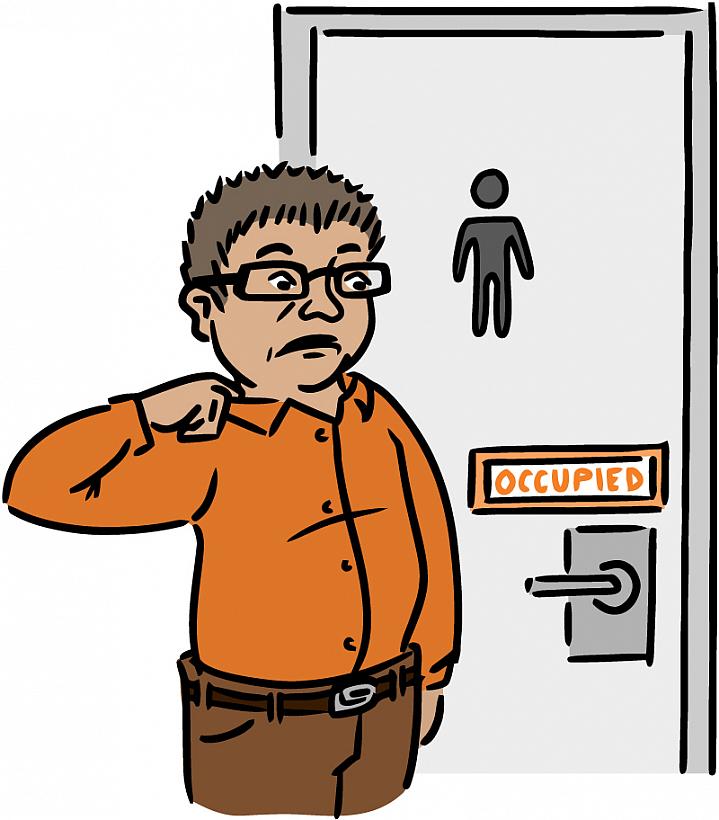The Prostate Prognosis
Don’t Ignore an Uncomfortable Problem

Most men probably don’t like thinking about their prostates, but it’s worth doing once in a while. Problems with the small gland are common in men past the age of 50. The good news is that most prostate conditions can be successfully treated.
The prostate is about the size of a walnut. It wraps around the urethra, the tube that carries urine out of the bladder. During sexual climax, or ejaculation, the prostate adds fluid to sperm to create semen, which also leaves the body through the urethra.
For men under 50, the most common prostate problem is prostatitis. It can cause a burning feeling when you urinate or an urge to urinate more often. You might have a fever or just feel tired.
Prostatitis is caused by the prostate becoming inflamed or irritated. Some kinds of prostatitis are caused by bacteriaTiny organisms that can cause infection or disease.. If you have bacterial prostatitis, your doctor can spot it by looking at your urine through a microscope. Bacterial prostatitis can usually be treated with an antibioticA medicine that kills bacteria..
But most of the time, there’s no clear cause for prostatitis. Researchers have yet to identify a clearly effective treatment when the cause is unknown. You may have to work with your doctor to find a treatment that works for you. Changing your diet or taking warm baths may help. No single solution works for everyone.
For men over 50, the most common prostate problem is prostate enlargement, or benign prostatic hyperplasia (BPH). The prostate naturally grows larger as you get older. As it grows, it squeezes the urethra. The pressure can affect bladder control.
BPH can lead to more serious problems, such as urinary tract infections. In rare cases, the constant urination problems can lead to kidney damage.
Several treatments are available for BPH. In recent years, scientists have developed medicines that can shrink or relax the prostate to keep it from blocking the bladder opening. Researchers have also developed devices that allow doctors to remove parts of the prostate without major surgery. The procedures can usually be done in a clinic or hospital without an overnight stay. More invasive surgery is also an option.
The symptoms of prostate cancer, in which cancer cells form in the tissues of the prostate, can be similar to those of BPH. However, most of the time patients are diagnosed with prostate cancer after results from a blood test prompt a prostate biopsy.
Prostate cancer is the most common cancer in American men after skin cancer. But most men with prostate cancer don’t die from it. Many prostate cancers never even cause symptoms or become a serious threat to health. That’s because prostate cancer tends to grow more slowly than many other cancers. A prostate tumor may grow for 30 years before it gets large enough to cause symptoms. Several treatment options are available.
Certain risk factors have been linked to prostate cancer—for example, eating a high-fat diet. NIH-funded scientists are now looking at how prostate cancer can be prevented. NIH also has many research programs aimed at finding treatments for BPH and other prostate problems.
See your doctor right away if something doesn’t seem right to you down there. And if you can’t urinate at all, get medical help immediately.
NIH Office of Communications and Public Liaison
Building 31, Room 5B52
Bethesda, MD 20892-2094
nihnewsinhealth@od.nih.gov
Tel: 301-451-8224
Editor: Harrison Wein, Ph.D.
Managing Editor: Tianna Hicklin, Ph.D.
Illustrator: Alan Defibaugh
Attention Editors: Reprint our articles and illustrations in your own publication. Our material is not copyrighted. Please acknowledge NIH News in Health as the source and send us a copy.
For more consumer health news and information, visit health.nih.gov.
For wellness toolkits, visit www.nih.gov/wellnesstoolkits.


